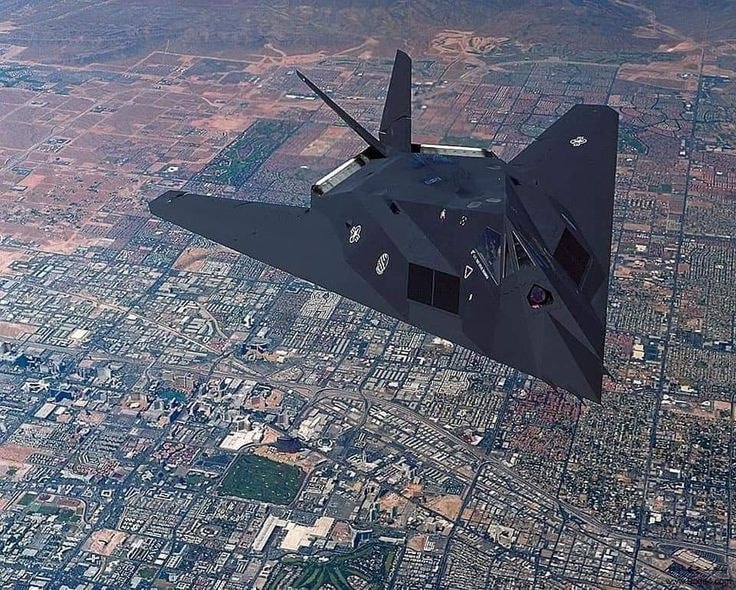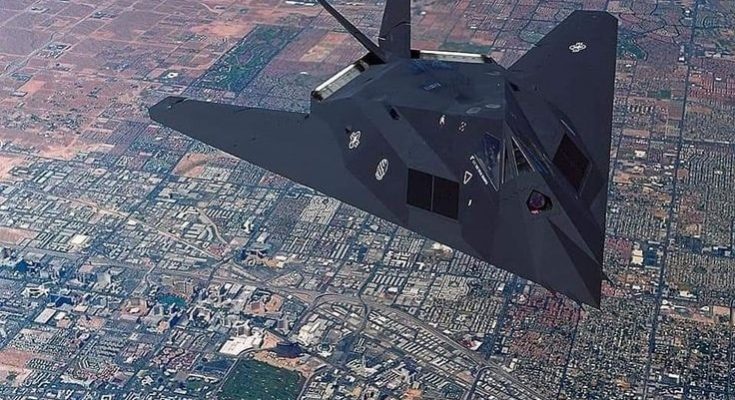
1. Introduction
The Lockheed F-117 Nighthawk is one of the most iconic military aircraft in aviation history. Despite its angular, almost alien appearance, it was not designed for speed or dogfights. Instead, it was built for one revolutionary purpose: stealth. As the world’s first operational aircraft to be designed around stealth technology, the F-117 fundamentally changed the nature of air combat and military strategy.
2. Development and Origins
-
Cold War Context: In the 1970s, U.S. military planners faced a growing challenge from advanced Soviet radar and surface-to-air missile (SAM) systems. The Pentagon needed a platform capable of penetrating heavily defended airspace without being detected.
-
Lockheed Skunk Works: The top-secret development was led by Lockheed’s Skunk Works division under the legendary engineer Ben Rich. The program, codenamed “Have Blue”, used groundbreaking radar-evading geometry derived from a Soviet physicist’s theoretical work.
-
First Flight: The F-117 first flew in 1981, with its existence officially acknowledged only in 1988 — seven years later.

3. Stealth Design Philosophy
-
Faceted Surfaces: Unlike modern stealth aircraft that use smooth curves, the F-117 relied on flat, angled panels to scatter radar waves. This made it nearly invisible to most radar systems of its time.
-
Radar-Absorbent Materials (RAM): The jet’s skin incorporated special coatings to reduce radar returns.
-
Compromises in Aerodynamics: The faceted design meant the aircraft was inherently unstable, requiring sophisticated fly-by-wire computer systems to maintain controlled flight.
4. Operational Role
The F-117 was not a fighter in the traditional sense — it had no radar and was armed only with precision-guided bombs. Its role was deep-penetration precision strike: to silently infiltrate hostile airspace, destroy high-value targets, and leave before the enemy could react.

5. Combat History
-
Panama (1989): First combat mission during Operation Just Cause.
-
Gulf War (1991): The F-117 spearheaded the opening strikes of Operation Desert Storm, hitting critical Iraqi command and control centers with surgical precision. Notably, it flew 1,300 sorties without a single loss, proving the effectiveness of stealth.
-
Kosovo (1999): An F-117 was shot down by a Serbian SAM operator — the only known combat loss — highlighting that stealth is not invisibility, and tactics must evolve with threats
6. Strategic Impact
:max_bytes(150000):strip_icc()/f-117-nighthawk-large-56a61c565f9b58b7d0dff7b1.jpg)
-
Shift in Air Warfare: The F-117 demonstrated that controlling the electromagnetic spectrum was as important as speed and firepower.
-
Influence on Future Designs: It paved the way for the B-2 Spirit bomber, F-22 Raptor, and F-35 Lightning II, all of which incorporate more advanced stealth shaping and sensor fusion.
-
Psychological Warfare: The mere presence of F-117s in theater often forced enemy forces to disperse or shut down radar systems preemptively.
7. Retirement and Legacy
-
Retirement: The F-117 was retired in 2008, replaced by more versatile stealth platforms.
-
Post-Service Role: Some F-117s continue to fly in a limited capacity for testing and training, often serving as stealth adversaries for new systems.
-
Legacy: While technologically surpassed, the Nighthawk remains a symbol of American innovation and the beginning of the stealth era.
8. Conclusion
The F-117 Nighthawk was never about air superiority in the dogfighting sense — it was about changing the rules of the game. By prioritizing invisibility over raw performance, it proved that warfare could be won not just through firepower, but through denying the enemy the ability to see or target you in the first place. In doing so, it reshaped military doctrine and ushered in a new age of stealth dominance.




